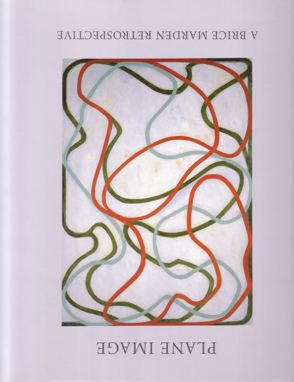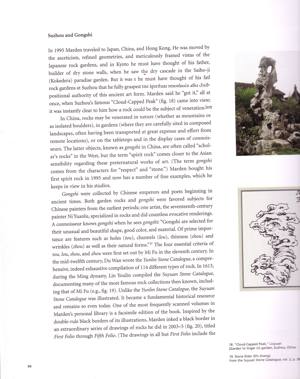In 1995 Marden traveled to Japan, China, and Hong Kong. He was moved by the asceticism, refined geometries, and meticulously framed vistas of the Japanese rock gardens, and in Kyoto he must have thought of his father, builder of dry stone walls, when he saw the dry cascade in the Saiho-ji (Kokedera) paradise garden. But it was only when he got to China and the rock gardens at Suzhou that he fully grasped the spiritual resonance and compositional authority of this ancient art form. Marden said he “got it,” all at once, when Suzhou’s famous “Cloud-Capped Peak” came into view; it was instantly clear to him how a rock could be the subject of veneration.
In China, rocks may be venerated in nature (whether as mountains or as isolated boulders), in gardens (where they are carefully sited in composed landscapes, often having been transported at great expense and effort from remote locations), or on tabletops and in the display cases of connoisseurs. The latter objects, known as gongshi in China, are often called “scholar’s rocks” in the West, but the term “spirit rock” comes closer to the Asian sensibility regarding these preternatural works of art. (The term gongshi comes from the characters for “respect” and “stone.”) Marden bought his first spirit rock in 1995 and now has a number of fine examples, which he keeps in view in his studios.
The above except is from the book: Plane Image – A Brice Marden Retrospective

